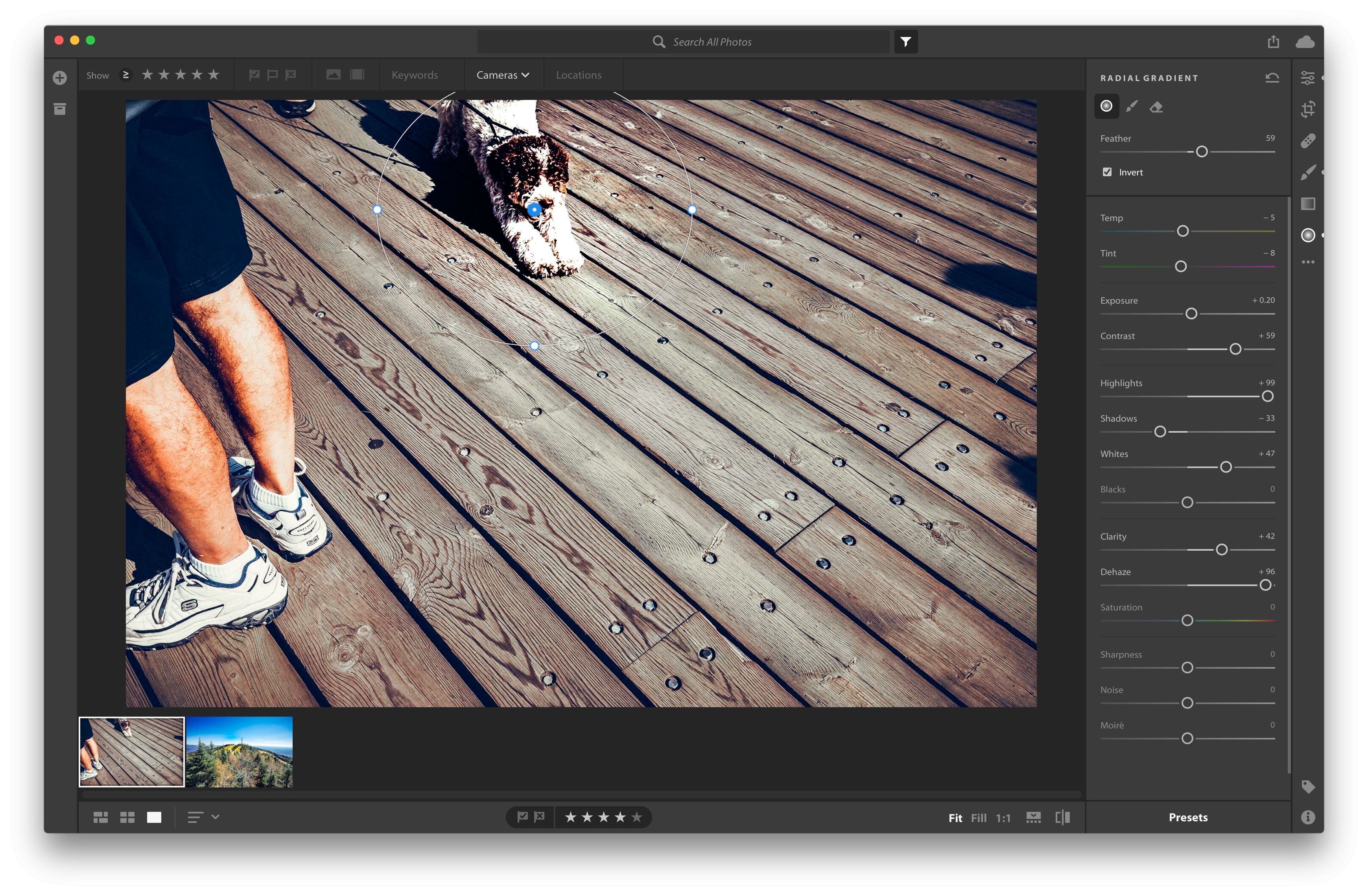
You can make your own or import presets (like any of ours). This is the same as if you’d choose the profile in the camera.Ī powerful feature that both Lightroom versions offer is presets. If you have a supported camera (basically any DSLR, mirrorless, and advanced point-and-shoot model on the market), you can also choose a camera-matching profile. By default, Adobe’s own standardised colour profiles are selected. The Calibration menu is missing, but you can choose and import profiles. The well-known local adjustments (radial, gradual, and brush) are also available, as well as the healing and cloning tools. This tool allows you to set specific aspect ratios, but you can’t put in custom ratios. You can crop and rotate your images with the crop tool.


This is also apparent in the smartphone version, where three-quarters of the bottom bar is occupied by non-editing related functions. It seems like Lightroom CC is currently tailored more towards beginners, even though its functionality enables otherwise. Sadly, there’s no way I’ve found to turn these off. It’s just a summary of what you’ve edited recently, and also has tutorial videos and guided tours of the software. Of these, I haven’t found much use for the Home panel. It has three main segments: Home, Library, and Sharing. The user interface of Lightroom CC is clean and responsive, in stark contrast to the Classic version. You can revert to the original image or make a new edit at any point during editing. Changes made to images are saved separately, in case of the Lightroom CC to the cloud. This means that your original image files are kept unmodified throughout the editing process.
Lightroom cc reviews software#
Like most advanced editing software today, Lightroom CC is non-destructive as well. Classic, on the other hand, has been around for more than two decades, and it was never entirely redesigned. This is because it was newly designed from scratch a few years ago. It’s not a hardware-intensive program, much less so than Lightroom Classic itself. Furthermore, it’s also available from your browser, albeit it’s quite sluggish there.

Lightroom cc reviews android#
It has desktop applications for Windows and Mac, and mobile/tablet applications on both Android and iOS. Lightroom CC is available on all platforms.

For an additional $10/month, you get 1TB of storage, which will be plenty if you filter your images properly. In the Photography Plan, there is 20GB of cloud storage included, as well as access to Photoshop. This costs $10/month in the US, and €13 in the EU. The cheapest of these is the Photography Plan. Lightroom CC is available as part of various subscription packages by Adobe. Cloud synchronisation is a feature I didn’t really know I needed before starting to use CC, but I’ve been loving it ever since. It’s especially useful for photographers who shoot a lot on the run, like street or documentary photographers. Anyone who doesn’t need extensive import/export tools and plugin compatibility has a high chance of being better off with Lightroom CC. The target audience for Lightroom CC is fairly well definable.
Lightroom cc reviews professional#
But it has limitations that make it difficult for professional use. Both are available in Adobe’s Photography Plan, and you can use them simultaneously.Īs a hint to the verdict, I find it a great tool for managing and editing my off-work photography, as well as smaller jobs. It’s important to note that you don’t have to choose between the two. It also has cloud sync, and a brand new interface, with slightly limited functionality. Lightroom CC offers extensive mobile and tablet support (besides desktop). Lightroom Classic has been kept as a photo processing and management workstation for use on desktop computers. Lightroom CC was introduced in 2017 when Adobe decided to split up Lightroom into two separate applications.


 0 kommentar(er)
0 kommentar(er)
